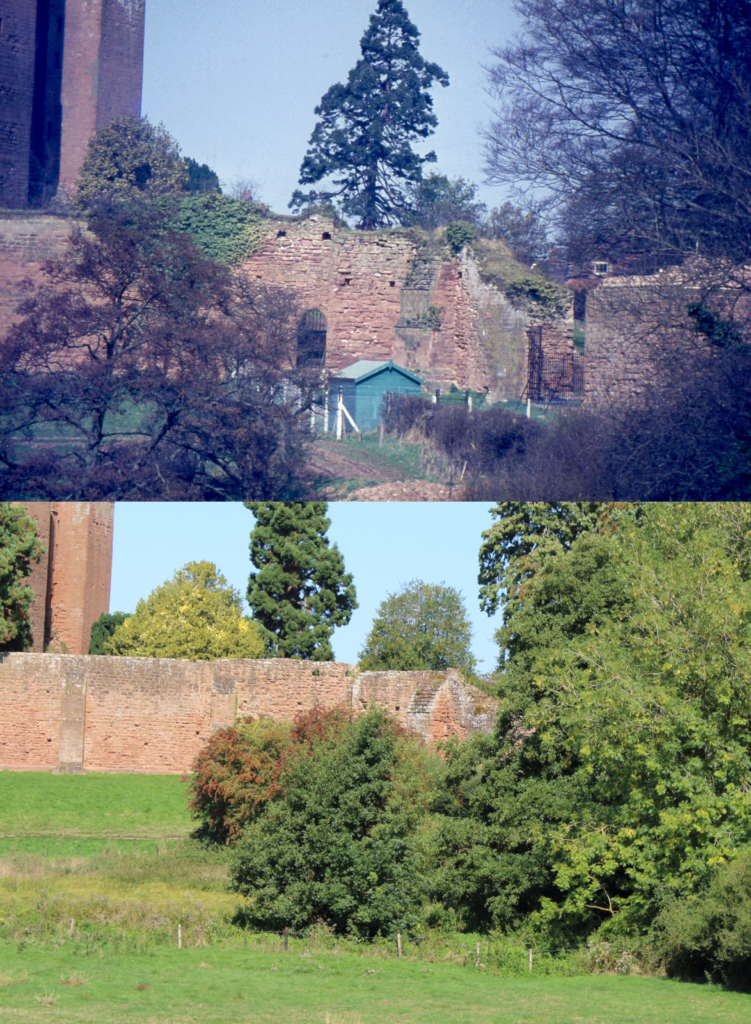
This Then & Now comparison pairs a 1960s ‘then’ colour image of what is possibly the castle’s Sally Port with a 2018 ‘now’ equivalent. The images have both been taken with a zoom lens from Echo Meadow to capture the stretch of the castle’s curtain wall between Leicester’s Building and Mortimer’s Tower from the outside. Much of the ‘now’ scene is obscured by modern tree growth around the brook in the foreground.
The stretch of curtain wall shown here is thought to have been built in the 13th Century (see the following English Heritage PDF plan of Kenilworth Castle).
King John spent what was then an enormous sum of £1,100, enclosing what is know known as the inner bailey with an outer curtain wall and defensive towers, to bring about the Castle’s concentric defensive rings we are familiar with today.
The approach to the castle from the south was guarded by the Gallery Tower, a long and exposed walk across the tiltyard dam and then the gates of Mortimer’s Tower. It seems a little odd to go to the trouble of building such defensive measures and then to insert a little door into the curtain wall but Sally Ports were vital defensive features in their own right. In a siege scenario, the defending forces could pick their moment to ‘sally forth’ out of their defenses and engage the enemy outside, before retreating back into the safety of their defences. It is far from certain, though, whether the door shown here is such a Sally Port, contemporary to the period of King John’s defensive works. KHAS chairman Jan Cooper and vice-chairman Norman Stevens are both of the opinion that it could very well be a later insert.
We know the ‘then’ image must be earlier than 1964 / 1965 because this is when the tiltyard approach to the castle was reinstated by the Ministry of Works, including filling in the gap between Mortimer’s Tower and the outer curtain wall formerly spanned by the touristic Fairy Bridge. Our ‘then’ image clearly shows the Mortimer’s gap before it was infilled and it shows that the Sally Port was, at this time, used as a tourist entrance into the castle, with a green wooden hut situated outside for taking tourists’ payments. Evidence as to whether the Mortimer’s Tower gap was itself part of the castle’s 12th / 13th Century defences, or a later breach driven through for the Earl Clarendon’s agricultural vehicular access, is now obscured by that 1960’s infill. This image provides a rare view of the site before that in-fill.
